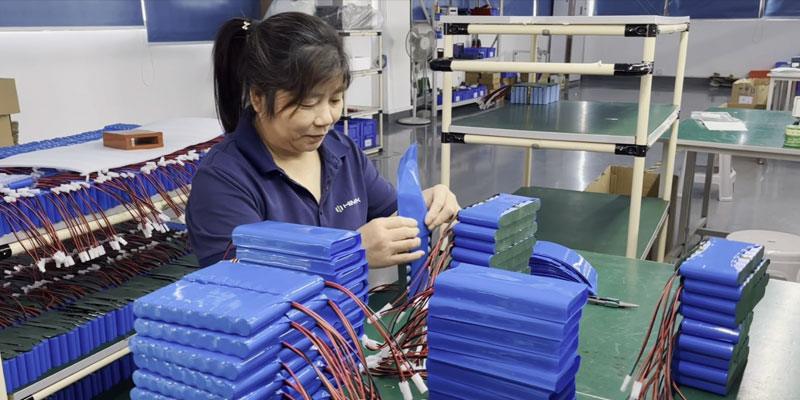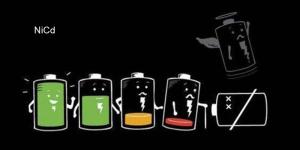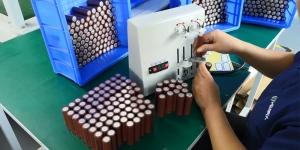Do li ion batteries have memory
Understanding the Memory Effect in Batteries
Origins and Impact of the Memory Effect
The memory effect originally described a condition observed primarily in Nickel-Cadmium (NiCd) batteries, where they appeared to “forget” their full charge capacity if they were repeatedly recharged after being only partially discharged. This effect causes the battery to lose track of its full energy capacity, which could be misleading as to how much energy the battery could hold and deliver.
-
Mechanism Behind Memory Effect:
-
Formation of Memory: In NiCd batteries, if they are not fully discharged before charging, the areas of the battery that remain inactive start to form crystals. These crystals reduce the active material available for future discharges and charge cycles, effectively decreasing the usable capacity of the battery.
-
Impact on Device Operation: For devices relying on these batteries, this could translate to shorter operational times after each charge, as the battery “thinks” it’s empty when there’s still unused energy left. This could lead to more frequent charging cycles, which in turn accelerates the wear and tear on the battery.
-
-
Historical Context and Advances:
-
Early Observations and Solutions: When the memory effect was first identified, it led to recommendations that users fully discharge their NiCd batteries before recharging them to “reset” the memory. This was a cumbersome process and not always practical for all types of devices, especially emergency equipment that needed constant, reliable power.
-
Technological Responses: The inconvenience and operational inefficiency led to significant research into alternative battery chemistries that would not exhibit this problematic behavior, setting the stage for the development of lithium-ion batteries.
-
Characteristics of Lithium-Ion Batteries Against Memory Effect
Lithium-ion batteries(LI-ION BATTERY) were developed in part to address the limitations seen in earlier battery technologies, including the memory effect. Their chemistry and operational dynamics differ significantly from those of NiCd batteries, giving them a natural resistance to memory issues.
-
Chemical Properties and Charge Management:
-
No Memory Formation: Unlike NiCd batteries, lithium-ion batteries use a chemistry that does not lead to the crystallization of inactive areas during partial discharges. This is due to the movement of lithium ions in a liquid electrolyte between the anode and cathode, a process that doesn’t degrade the electrodes in a way that would create a memory.
-
Efficient Charge Cycles: Lithium-ion batteries can handle partial discharge and recharge cycles without any significant loss in capacity. This flexibility makes them ideal for modern electronics that require frequent and varied usage patterns.
-
-
Longevity and Performance:
-
Cycle Life: Lithium-ion batteries typically have a cycle life of several hundred to several thousand cycles, with a gradual decrease in capacity. This degradation is uniform and predictable, unlike the abrupt and irregular capacity loss caused by the memory effect in NiCd batteries.
-
Adaptability in Usage: The robustness of lithium-ion batteries in various discharge states makes them suitable for a wide range of applications, from mobile phones that are often charged overnight regardless of their remaining battery level, to electric vehicles that benefit from “top-up” charges without needing a full depletion of battery life.
-
Himax Electronics: Innovations in Lithium-Ion Battery Technology
Himax Electronics recognizes the critical importance of reliable battery technology in modern devices and systems. Their innovations are centered on maximizing the performance, safety, and longevity of lithium-ion batteries, enhancing their usability across a broad spectrum of applications.
-
Advanced Battery Management Systems (BMS):
-
Optimal Charge Regulation: Himax’s BMS technology ensures that lithium-ion batteries are charged within their optimal voltage and current ranges, preventing conditions that might otherwise lead to premature battery degradation. This management system is crucial for maintaining battery health and efficiency, especially in devices that require extensive and intensive use.
-
Safety Enhancements: Safety enhancement: through functions such as temperature monitoring and charge rate adjustment. Himax uses high-quality BMS to prevent conditions that can cause the battery to overheat or potentially chemically destabilize. This proactive approach to safety helps avoid any risks associated with improper charging and extends the life of the battery.
-
-
Research and Development Focus:
-
Material Innovation: Himax is at the forefront of researching new electrode materials and electrolyte solutions that increase the energy density and charging speed of lithium-ion batteries. By improving these fundamental components, Himax not only advances the functionality of lithium-ion batteries but also ensures they remain a viable and sustainable option for future technologies.
-
Sustainability Initiatives: Environmental considerations are paramount in Himax’s R&D strategy. The company invests in technologies that enhance the recyclability of battery components and reduce the environmental impact of battery production and disposal. This commitment to sustainability is aligned with global efforts to minimize the ecological footprint of technological advancement.
-
Himax Electronics: Pioneering Advancements in Lithium-Ion Battery Technology
Himax Electronics has consistently positioned itself as a leader in the lithium-ion battery market by focusing on technological innovations that not only enhance performance and safety but also prioritize environmental sustainability.
Innovative Design and Safety Features
Himax Electronics is committed to overcoming the challenges faced by lithium-ion batteries, particularly in terms of safety and efficiency. They achieve this through:
-
Innovative Cell Architecture:
-
High-Efficiency Designs: Himax invests in developing cell architectures that improve the overall efficiency of lithium-ion batteries. This includes innovations in the arrangement of battery cells and the materials used for both anodes and cathodes, which help increase the energy density and reduce the charge times.
-
Thermal Management Solutions: Understanding the importance of temperature regulation in battery performance and longevity, Himax has developed advanced cooling technologies that ensure batteries operate within safe temperature ranges under all operational conditions.
-
-
Enhanced Protective Technologies:
-
Multi-Layer Protection Systems: Himax batteries are equipped with multiple layers of protection to prevent common issues such as overcharging, deep discharging, and short-circuiting. These systems are crucial for maintaining the stability and integrity of the battery throughout its lifecycle.
-
Active Monitoring Capabilities: Leveraging smart technology, Himax batteries are embedded with sensors that continuously monitor various parameters such as voltage, current, and temperature. This data is used to dynamically adjust the battery’s performance to optimize its efficiency and safety.
-
Sustainability and Environmental Responsibility
Himax Electronics not only innovates for better performance and safety but also ensures that its technologies are environmentally friendly:
-
Eco-Friendly Materials:
-
Reduced Harmful Substances: Himax is dedicated to reducing the use of harmful substances in its batteries. This includes finding alternatives to traditional materials that may be less environmentally friendly or potentially harmful over long-term exposure.
-
Recyclability: Himax designs its batteries to be recyclable, ensuring that after their lifespan, the materials can be efficiently processed and reused, minimizing waste and environmental impact.
-
-
Green Manufacturing Processes:
-
Reducing Carbon Footprint: Himax’s manufacturing processes are optimized to minimize energy consumption and reduce carbon emissions. They employ renewable energy sources where possible and continually seek ways to reduce the environmental footprint of their production activities.
-
Conclusion: Leading the Way in Battery Technology
Himax Electronics remains at the forefront of the lithium-ion battery industry, not just as a manufacturer of efficient and safe batteries, but as a pioneer of sustainable and innovative solutions that push the boundaries of what these batteries can achieve. Their commitment to safety, efficiency, and environmental responsibility makes them a standout leader in the technology sector. Whether for consumer electronics, automotive applications, or industrial uses, Himax Electronics continues to provide advanced battery solutions that are reliable, safe, and environmentally conscious.
For anyone interested in the latest advancements in battery technology or seeking sustainable, high-performance energy solutions, Himax Electronics offers a wealth of products and expertise that can meet a wide range of needs. Visit their website or contact their support team for more information on how their battery innovations are powering a safer, greener future.





